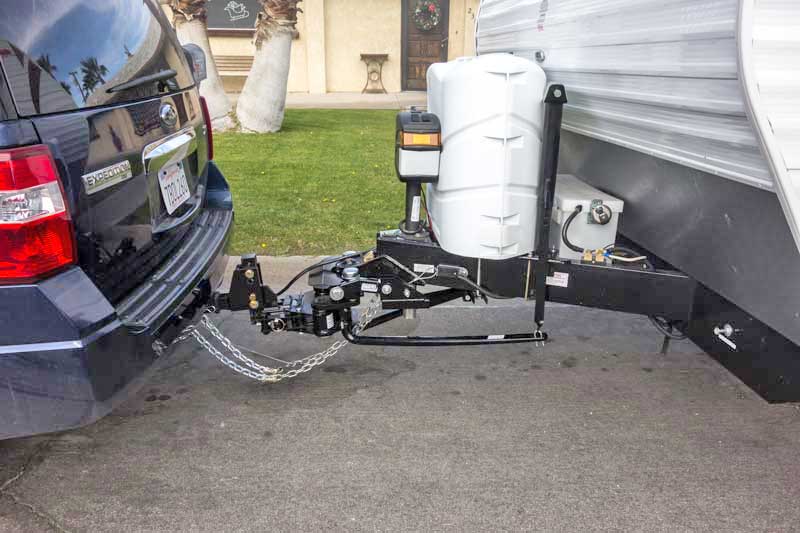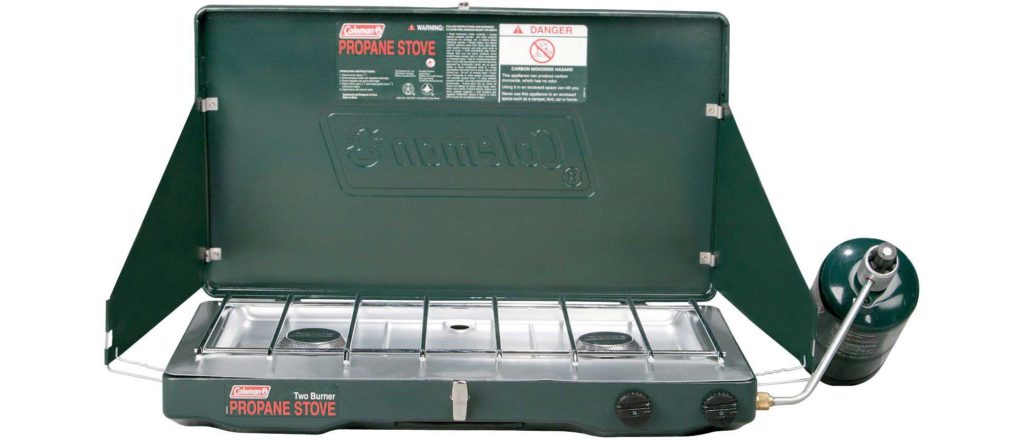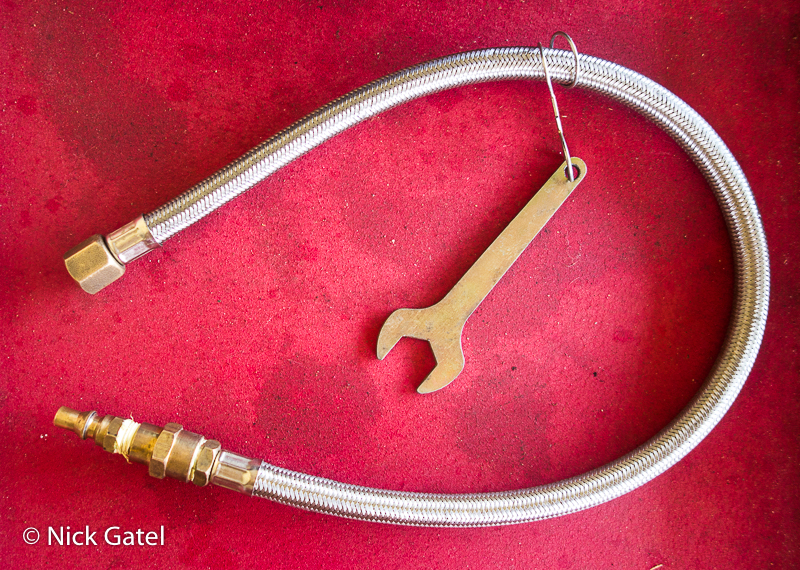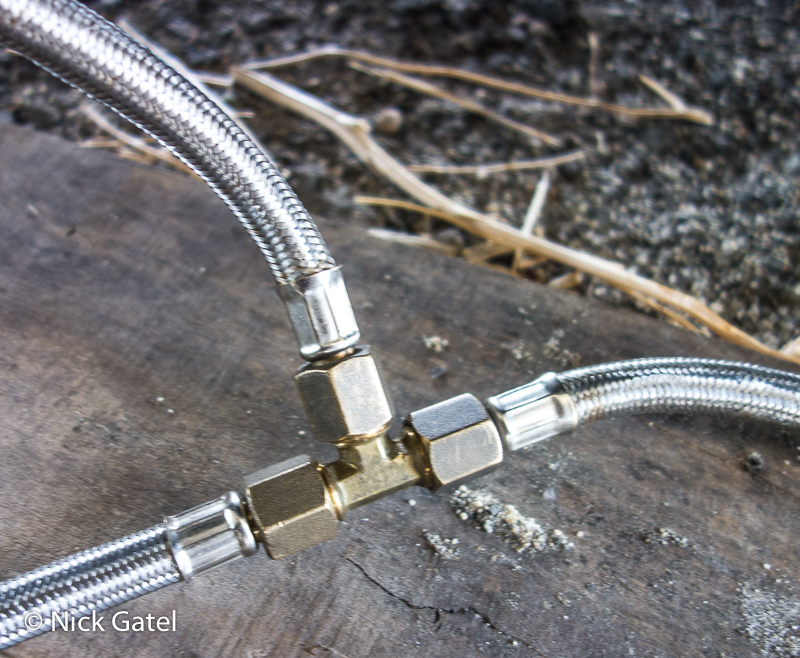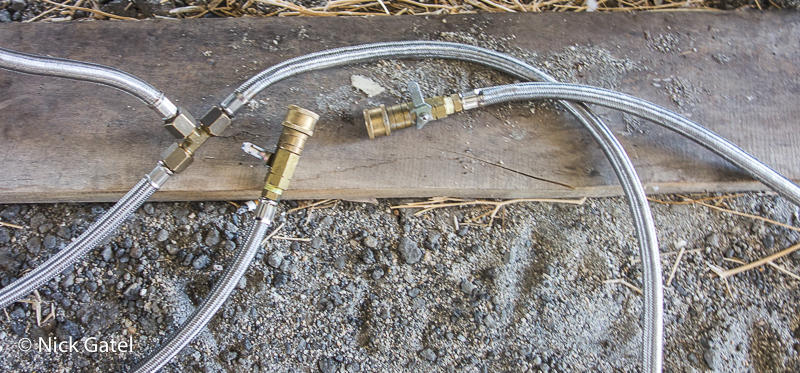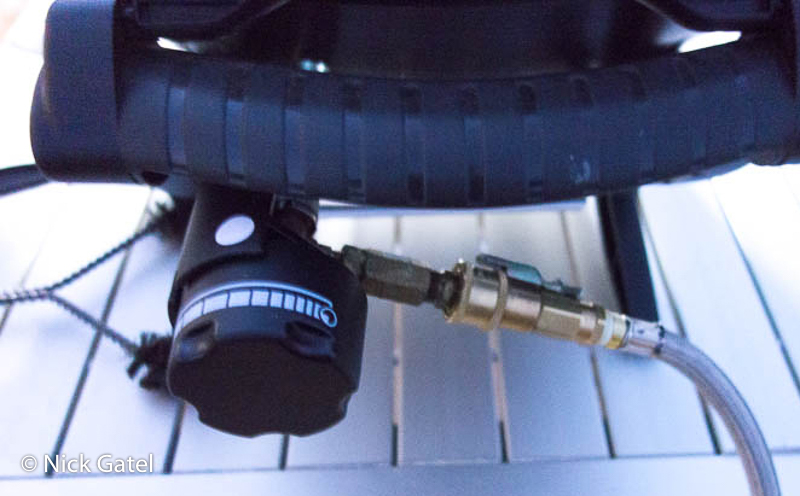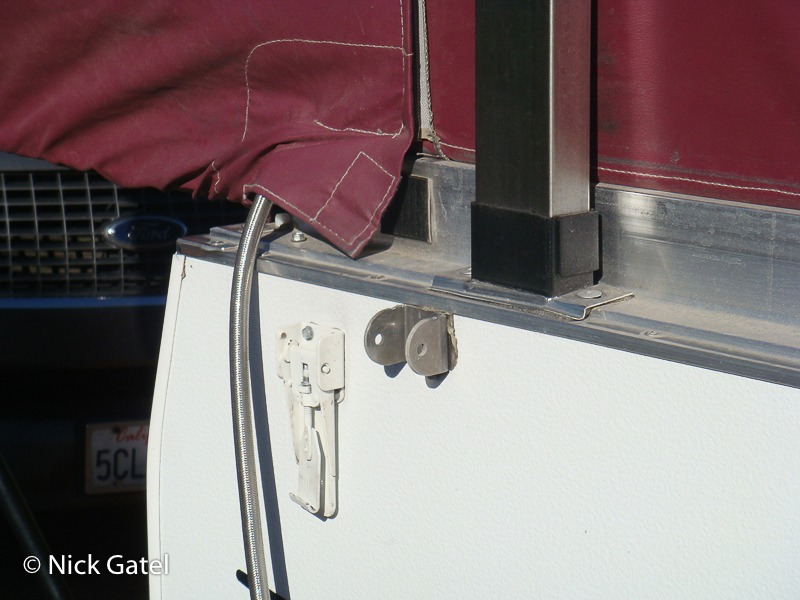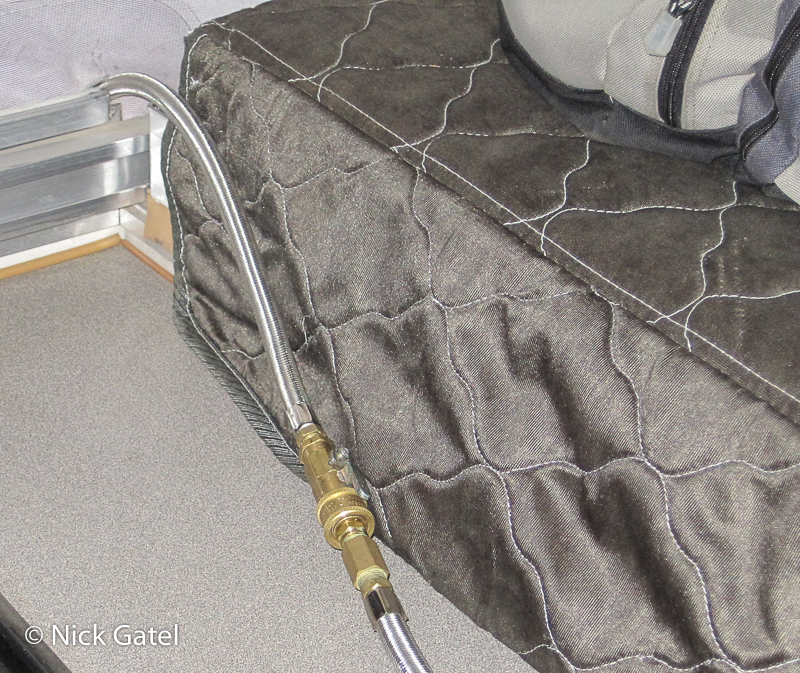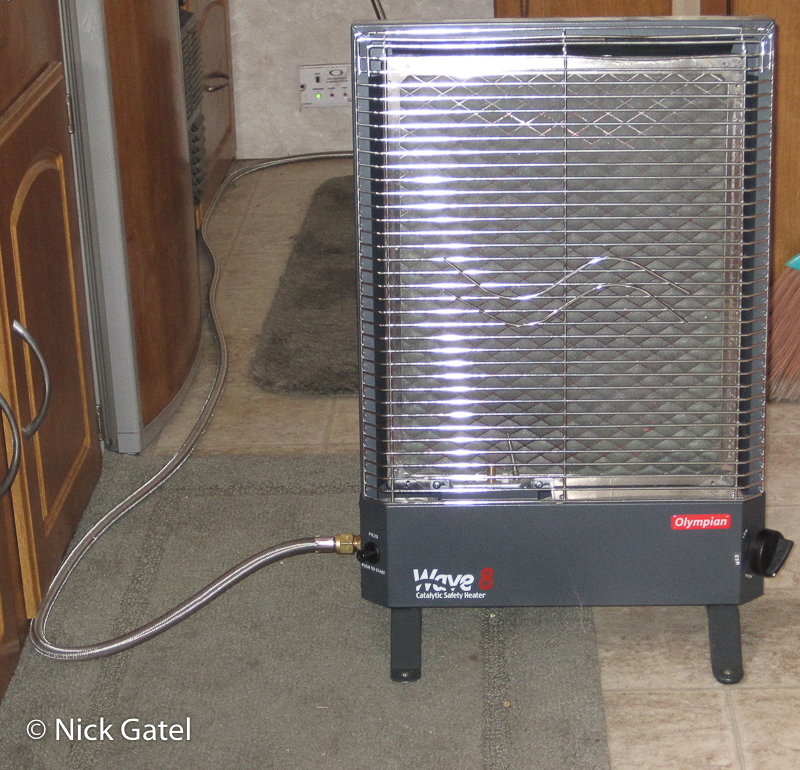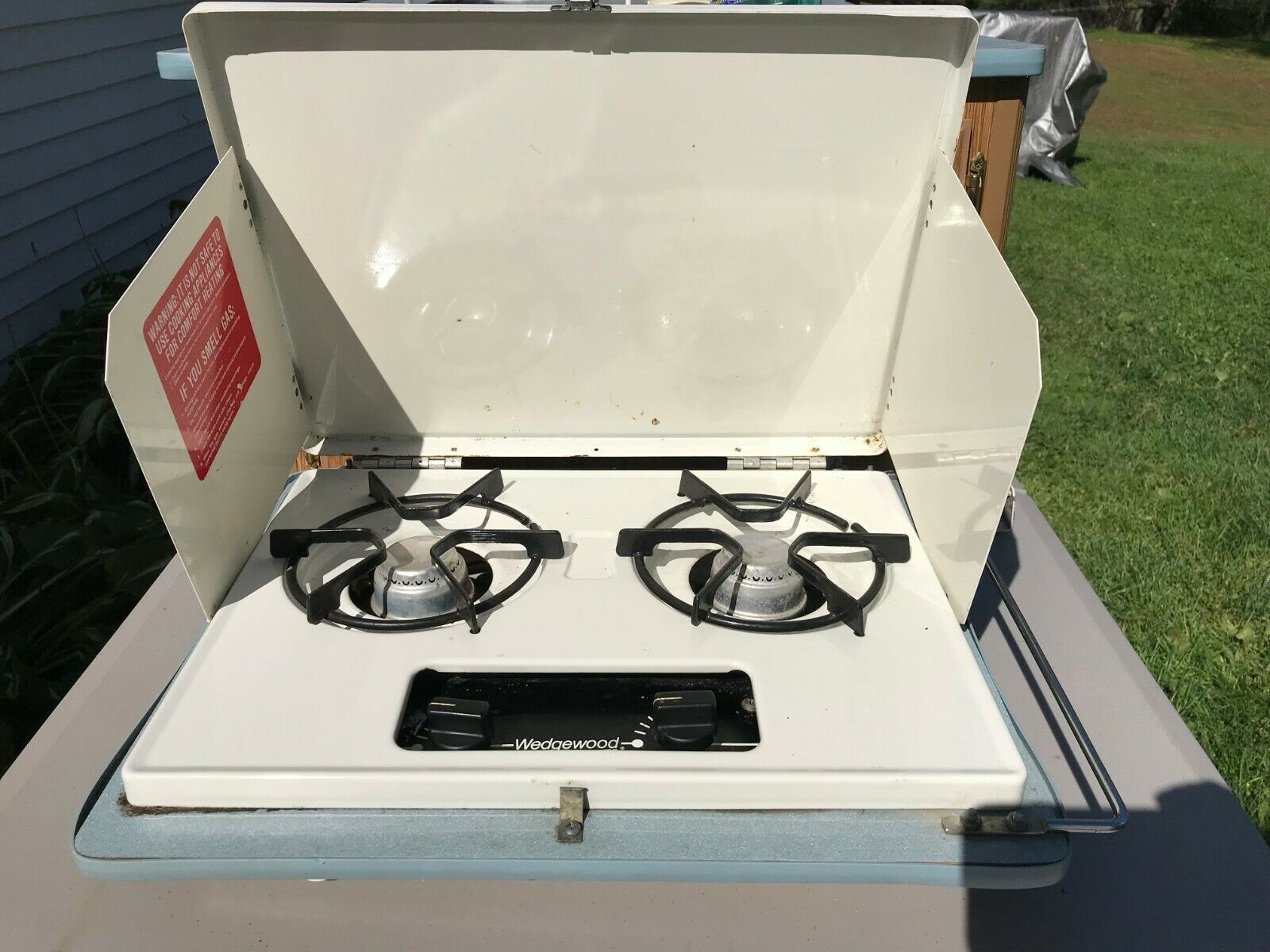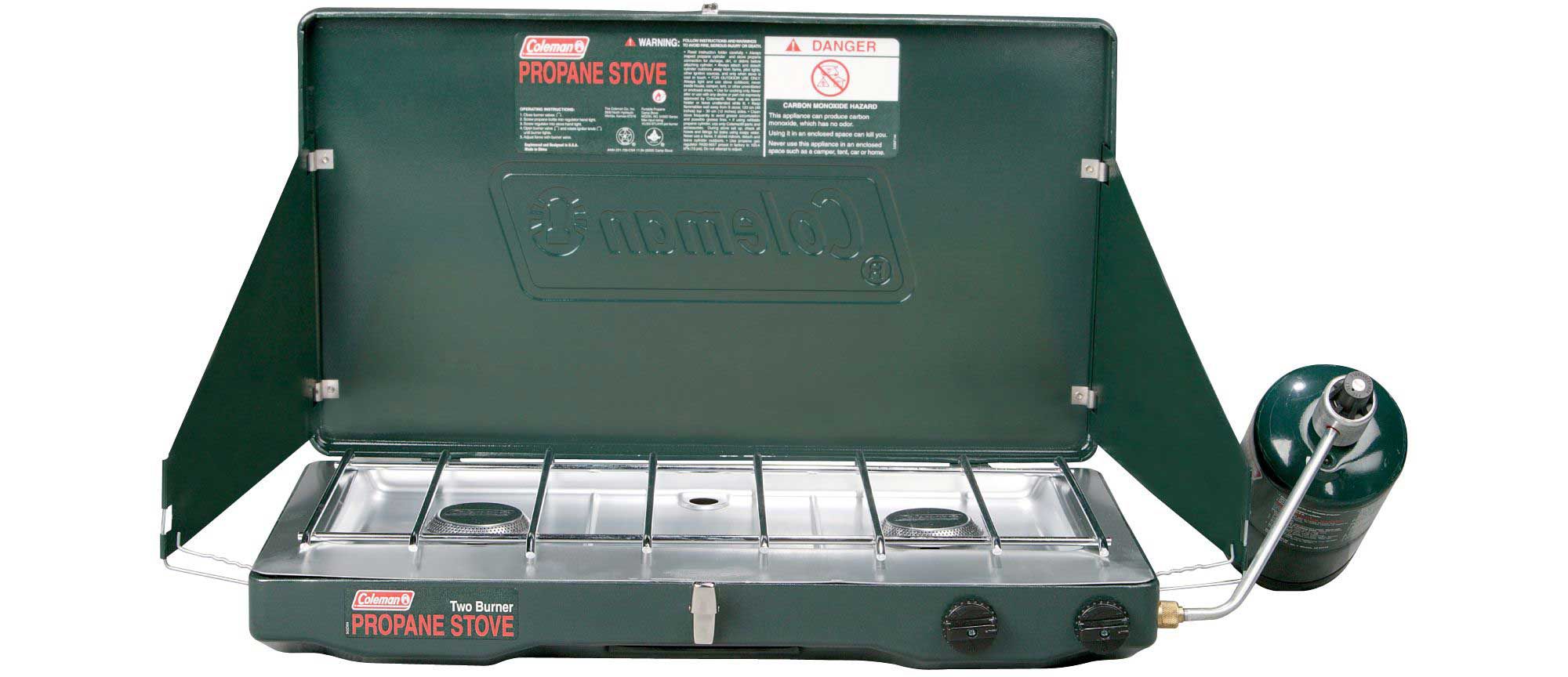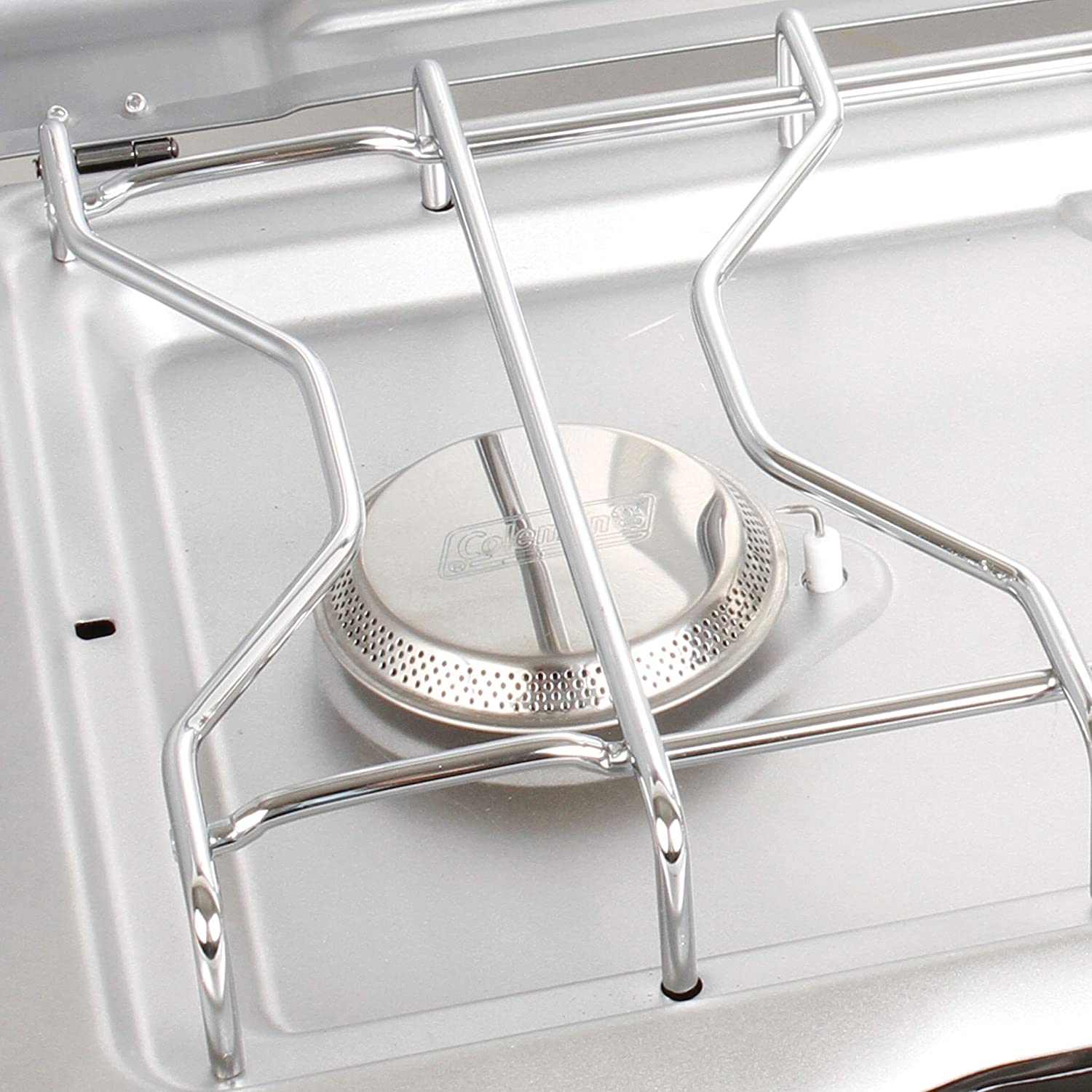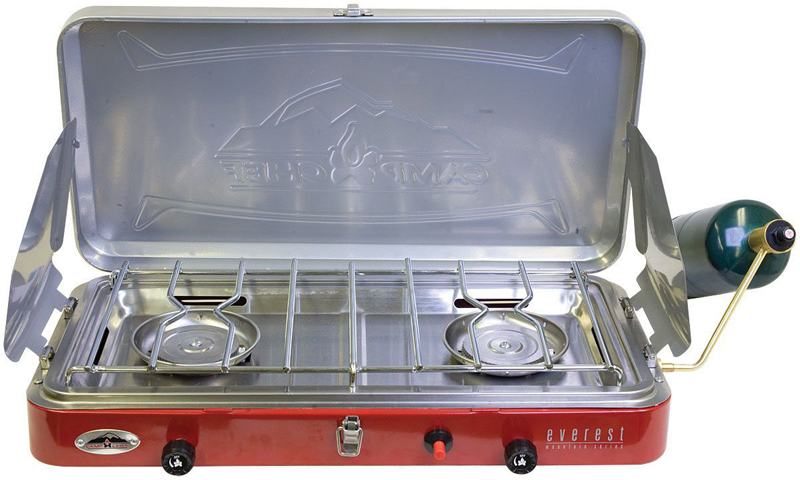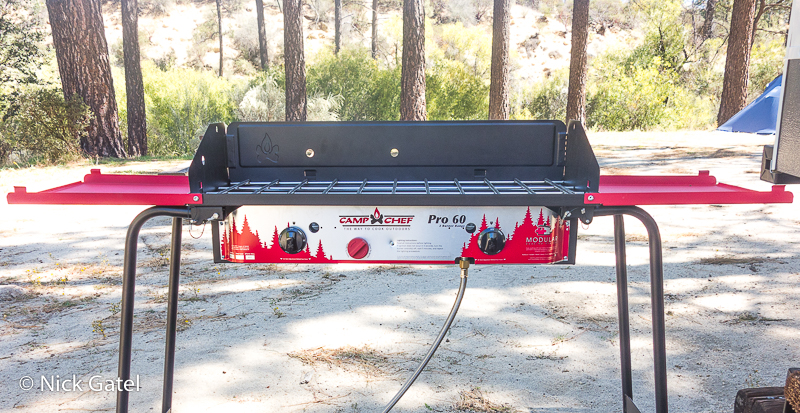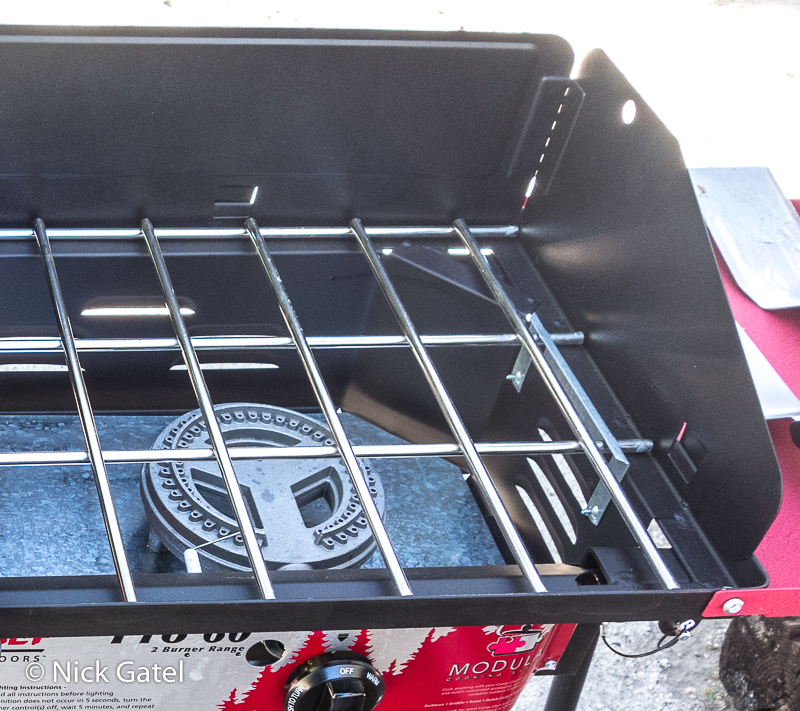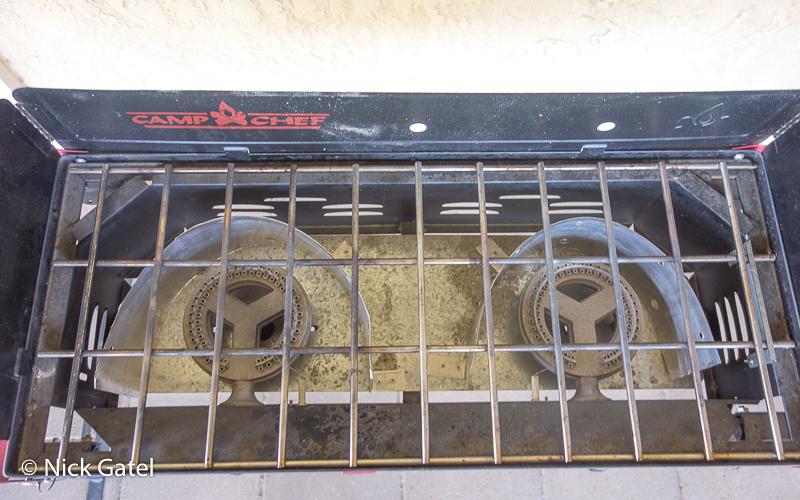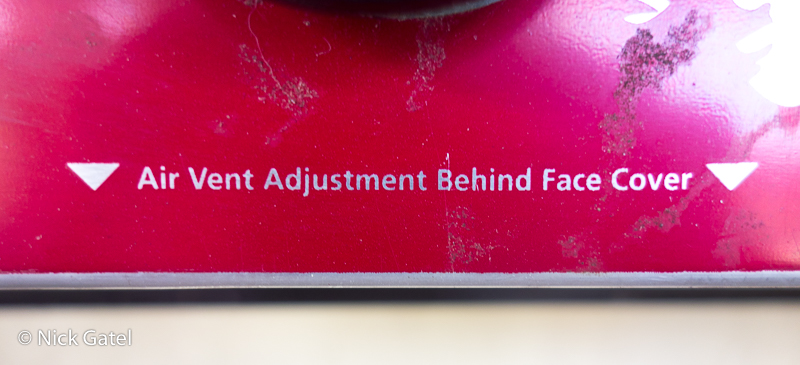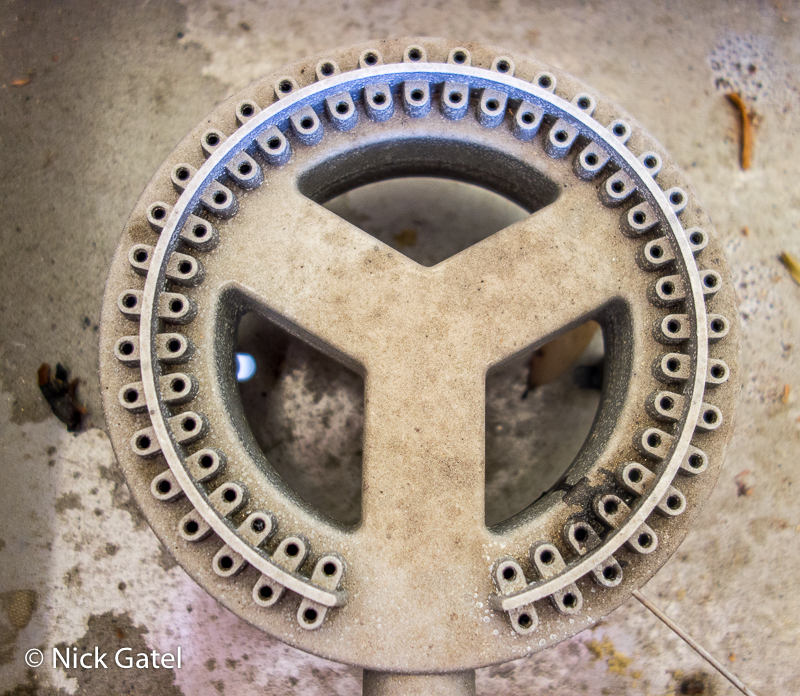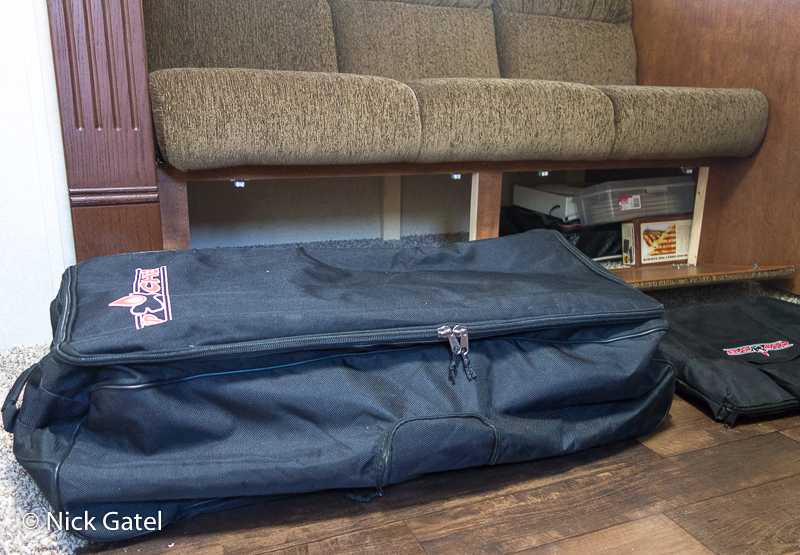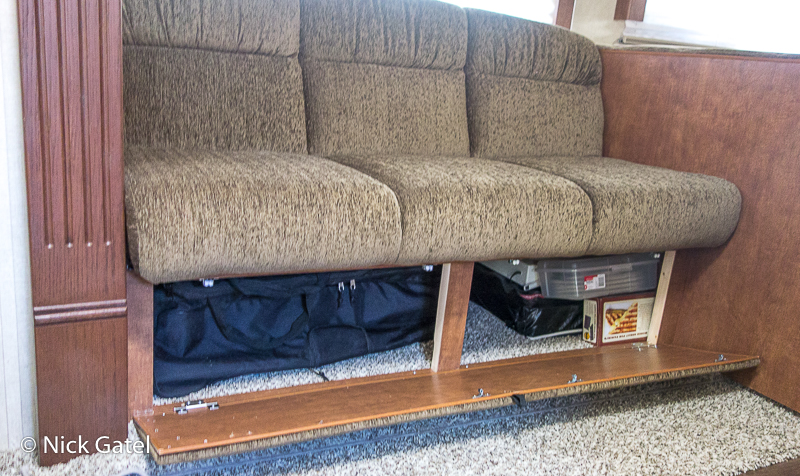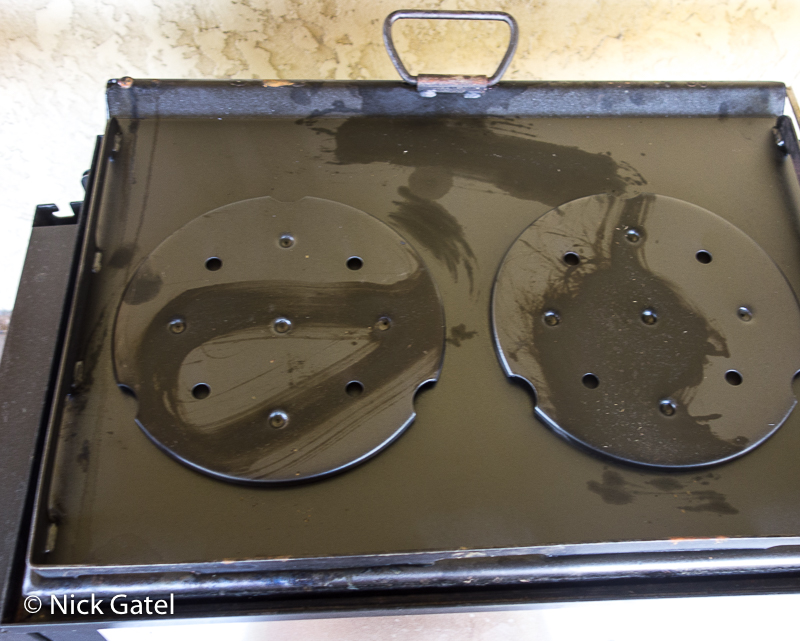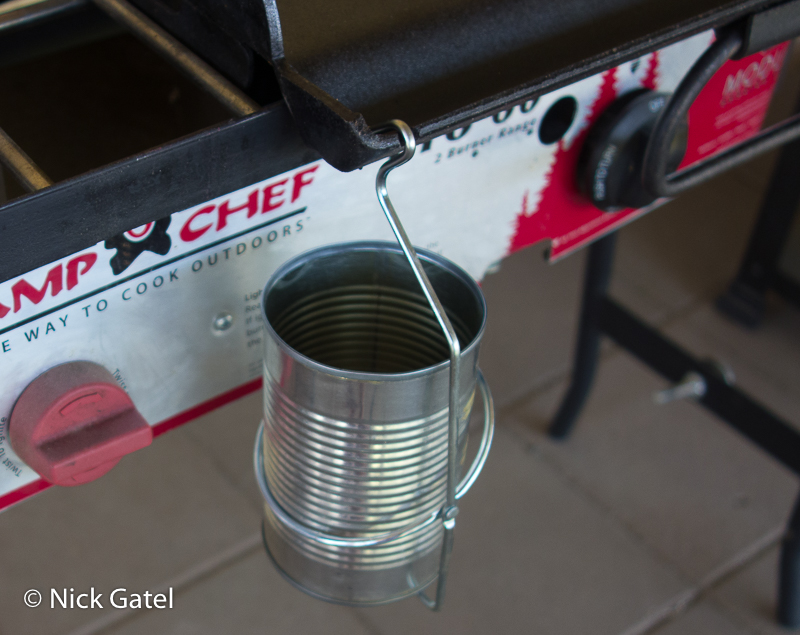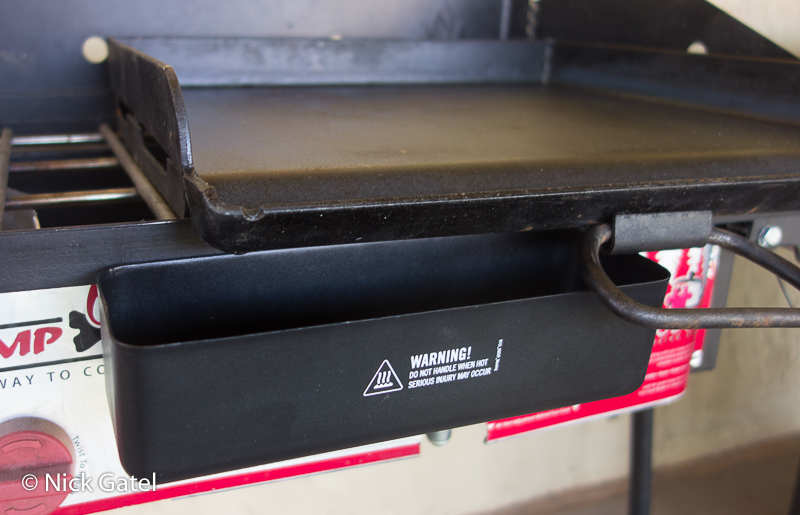One advantage of camping over backpacking is the camper usually has more time to cook. I mean the time to really cook a meal that is simply wonderful to eat. And if you own a car or even a camper or RV, you have the space to bring real cookware, and of course, a real stove.
Camping is about spending time outdoors. A camper itself, for many who own one, is just a huge traveling tent meant only for sleeping and shelter in poor weather. Not only is it more fun to cook outdoors, it prevents stinking up the small interior of the camper by cooking inside the contraption. Which leads to the question, what is the best outdoor stove for camping?
In this post I will discuss what we need a camping stove to do and then compare our requirements agains our Camp Chef Pro 60D stove, which does not meet these attributes.
This does not mean the Camp Chef is a poor stove.
Is There a “Best” Stove?
When it comes to outdoor gear and equipment, nothing is best. However there may be something that is best for you. Before one can determine what is best for him or her, he or she really needs to think about what it needs to do, what conditions it will be used in, and determine any other factors that will limit or enhance its effectiveness and practicability.
Before buying a stove the best method is to develop a list of features you need in a stove. There are so many factors to consider, so I will go through the things I need an outdoor camping stove to do. What is important here is the process, not necessarily what is important to me. Using this process, you can develop your own list. Keep in mind that we do much of our outdoor cooking on our Baby Q gas grill and a camping stove just expands our outdoor kitchen.
My List of Desired Features
- Fuel: I want the stove to connect to our camper’s low-pressure propane system using a quick connector.
- Wind Worthy: It has to work well in windy conditions.
- Ample Burner Power: This is measured in BTUs.
- Compact: It has to be easy to store.
- Size: It has to be large enough to fit a decent size pot(s).
- Light: As light as possible.
- Griddle Compatible: Big enough for a decent sized griddle.
Over the years I have used several stoves, none of which met all of the above criteria. They were all compromises. None could be tagged as “best.” For the past seven years, we have been using a Camp Chef Pro 60D Double Burner Stove. You can read about it here. We used it on every camping trip for nearly five years. It was almost perfect at first. Then little by little it became less perfect. The stove didn’t change, get old, or degrade. The more we used it, the more I saw it didn’t do everything it we needed it to do. It’s a good stove and we now use it on our home patio. This stove will serve as a good example of what seems perfect, but isn’t.
We bought a new stove a couple years ago to replace the Camp Chef Pro 60D Double Burner Stove as our camping stove, and the replacement stove is almost perfect. Perhaps it is the best stove for us. This post isn’t about the new stove.
Fuel
I have cooked with wood, white gas, alcohol, charcoal, solid fuels, and propane (a.k.a. LPG). For convenience, ease of use and cost, I prefer to use propane in a bulk tank — I want a stove that can connect to our camper so I can use the large propane tanks that are already mounted to the trailer’s tongue. This way I don’t have to fool with additional types of fuel or containers.
Connecting a Stove to Your Camper or RV
If you want to connect a propane stove to a camper, the process should start by considering how you will do this. This will included buying a (or several) special hose and may involve additional hardware and in some cases purchasing additional fittings to hoses.
Most campers built in the past twenty years or so have a quick connector on the outside of the camper to connect a propane appliance. Our 1992 Starcraft came with one from the factory.
What is really, really important here is you cannot just connect any camping stove to a recreational vehicle. RVs are low-pressure systems, delivering around 11 inches of water column pressure, which is about .397 inches per square inch. Yes, this pressure can be measured with a specialized tool, a manometer. I have one and use it to diagnose issues with propane-operated appliances.
The good news is you will not need a manometer to find the best stove for you.
Most camp stoves that use the 1lb disposable propane bottles operate around 15 pounds per square inch of pressure, so they aren’t going to work connected to a RV. Below is a Coleman propane stove and the propane connection is typical of a lot of camp stoves. These stoves are high-pressure stoves.
A stove that can be connected directly to a camper needs to run on low-pressure. Usually a manufacturer’s website will tell you if it can do this, but one often has to search around the website to find this information. We own three Camp Chef stoves and all run on low pressure. Actually all the Camp Chef stoves except their Mountain Series of stoves run on low-pressure.
By the way, if you just want a great camping stove that runs on those green 1lb bottles, the Camp Chef Everest stove is highly rated and I do recommend it. You can also buy adapters to connect it to a bulk propane tank.
Propane Quick-Connect Coupler Information
This is the best way to connect a low pressure stove to a camper and most modern campers already have a quick connect.
It is important that you use quick couplers designed for propane systems. Also, if you are connecting to a camper, you want low-pressure connectors that are typically marketed as Type 250.
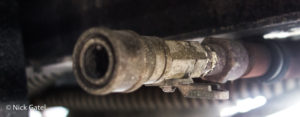
I use braided steel hoses, which are expensive. You don’t need these. The easiest way is to buy hoses that are already fitted with a connector on one end to connect to your RV such as the one below.
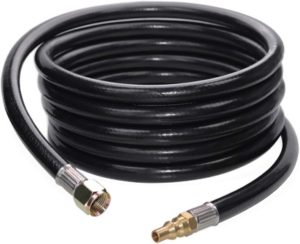 In the picture above the fitting on the left is 3/8” flare female Swivel (probably the most common appliance connection). The fitting on the right is a Type 250 male quick connect for attachment to Type 250 female quick connector found on almost every camper/RV made in the past fifteen years or so.
In the picture above the fitting on the left is 3/8” flare female Swivel (probably the most common appliance connection). The fitting on the right is a Type 250 male quick connect for attachment to Type 250 female quick connector found on almost every camper/RV made in the past fifteen years or so.
If you opt for braided steel hoses, most come with a 3/8” female swivel flare fittings at each end, which means you will, at a minimum buy an adapter to connect the coupler at one end of the hose.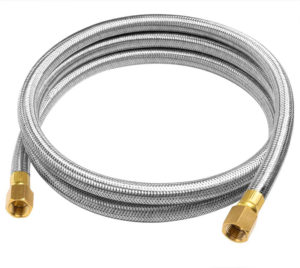
Below is a hose with different size ends. The hose fitting on the bottom is 3/8” NPT (National Pipe Thread) with a reducer to ¼” NPT that the male quick coupler fits.
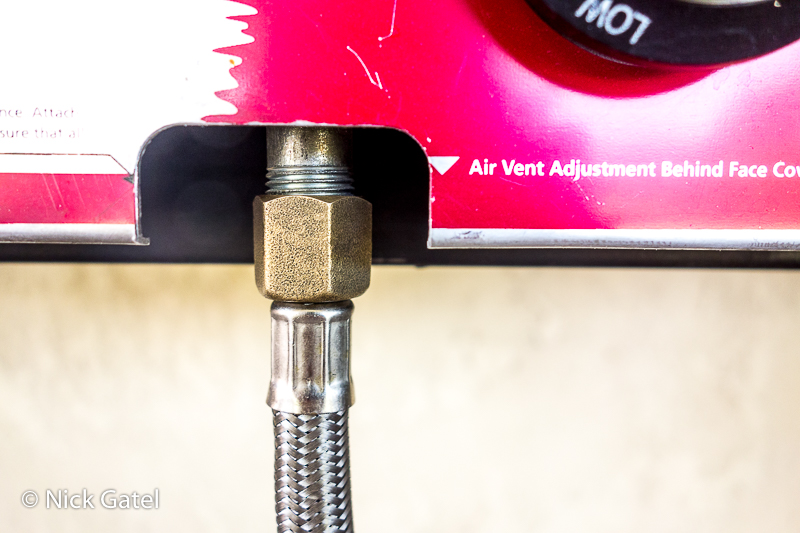
Connecting Multiple Appliances to a Camper
We connect both our Weber Q grill and our stove to the camper. You can buy a “T” fitting to connect to the camper like the one below.
What I don’t like about these is the risk of too much pressure on the fitting, especially if you accidentally step or trip on a hose. This is another consideration. Be careful with the placement of hoses so they aren’t a hazard.
My preference is a long host to a single camper connection, and then a “T” constructed from hoses (see below).
The top hose goes to the camper quick connect the other two to the Weber Q and the stove. The two hoses to the appliances have a quick connect. One connects directly to the Weber Q and the other to a shorter hose that is connected to the stove.
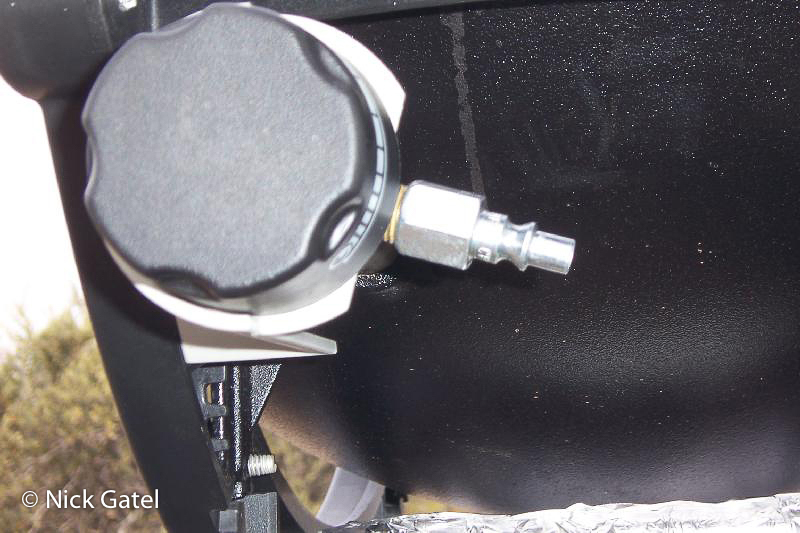
At night when we want to run our low-pressure Wave 8 catalytic heater, I disconnect the Baby Q hose and connect the hose to the heater.
The pictures below show how we did this on our 2006 Fleetwood tent trailer. We use the same set up with our current travel trailer, only instead of passing the hose through the canvas, we slightly open a window and pass the hose through the opening into the camper.
Before you buy anything, you need to diagram your hose setup, take into consideration what kind of fitting is at each hose end and buy the appropriate fittings.
Flare fittings do not need any kind of thread sealer. Threads on NPT fittings need sealant for the threads, either brush-on or Teflon tape. You must use the appropriate thread sealant product. For propane it is yellow brush on sealant or Teflon tape.
Once you have determined the logistics of connecting a stove directly to the camper’s propane system, you can now decide if you want to go through all the work. Also, once you pick out a stove and what kind of hose fitting it will require, you can finalized you hose connection components.
Wind Worthy
Cooking outdoors is much different than cooking indoors. For a backpacker, outdoor cooking has to be quite minimalist. For the camper, it can be comparable to cooking at home, except you are outside. Outside often means you have to deal with wind, and even a slight breeze can play havoc with a stove.
Most outdoor camping stoves come with a three-sided windscreen. They may block some wind, but wind will blow over the top and around the sides, which disturbs the air around the burners.
Another problem with windscreens is the sides limit how wide a pot or skillet can be.
The outdoor stove below is a typical one that came with tent trailers years ago. Not only can you see how close the sides of the windscreen is to the grates, but also the grate and burner are above the surface of the stove body. This design guarantees it will work poorly in even a slight breeze.
Let’s take another look at the Coleman high-pressure camp stove (below). The burners are recessed below the top surface of the stove.
A closer look at the burner shows that it will still be subjected to any air turbulence.
Earlier I stated the Camp Chef Everest was a highly recommended camping stove. It has a nice windscreen, the burners are below the top surface of the stove, and there is another windscreen around each burner!
Alas, the Everest is high-pressure stove, thus not meeting one of my criteria for a stove that works for us. However it will run of a bulk propane tank with an adapter. Just not off the low pressure Quick Connect system.
Camp Chef Pro 60D Windscreen
Our Camp Chef Pro 60D came with a three-sided windscreen that did a fairly good job. But it was awful trying to simmer and the wind would often blow out the burner flame.
The burners are recessed, but there is so much space around the burners along with many vents in the housing, it was lousy for simmering even with a slight breeze.
I eventually built an additional screen around each burner below the grate as described in this post.
The windscreens around each burner made a significant improvement although not perfect. In wind, it is going to be impossible to mitigate completely the impact of wind. These homemade windscreens do not completely surround the burners because I was concerned the burners could overheat. Another concern is there wouldn’t be enough airflow around the burners possibly resulting in excessive carbon monoxide emissions. The burner windscreens made the stove as good as it can get, and overall I am pleased with the result. These screens around the burners are tall, reaching to the grate. With this stove it is simple to adjust the vent where the gas and air mix to get a perfect colored flame.
Burner Power
Without much thought about it I used to think more was better and the Pro 60D stove has burners rated at 30,000 BTU.
More BTUs generally means a larger burner with a larger flame — this is fine for boiling water in a large pot. For general use it is more difficult to simmer.
The average household kitchen stove has burners in the 6K-12k range. We have a big stainless steel stove with heavy cast iron grates. The burners are rated from 5.5k to 15k BTUs. The small burner is designed for simmering.
The burners on our Pro 60D are not designed for simmering at all.
Compact: It has to be Easy to Store
Our kitchen stove is 30 inches wide and the distance between burners is 16 inches on center.
The Pro 60D is also 16 inches on center between burners. It is wider than our kitchen stove at 32 inches. With the shelves opened, it is 62 inches wide. So it is huge.
The stove was bulky and cumbersome to store. I ended up buying a rolling duffle bag to make it easier to carry into the camper and store.
Size: It has to be Large Enough to Fit a Decent Size Pot(s)
Obviously the Pro 60D meets this requirement.
Light: As Light as Possible.
The Pro 60D weighs 47lbs. This is a big fail for a portable camping stove unless you are cooking for a large group of people. There are just two of us. Once in a great while we may have more, such as last year when our kids and their family camped with us for a few days.
Griddle Compatible
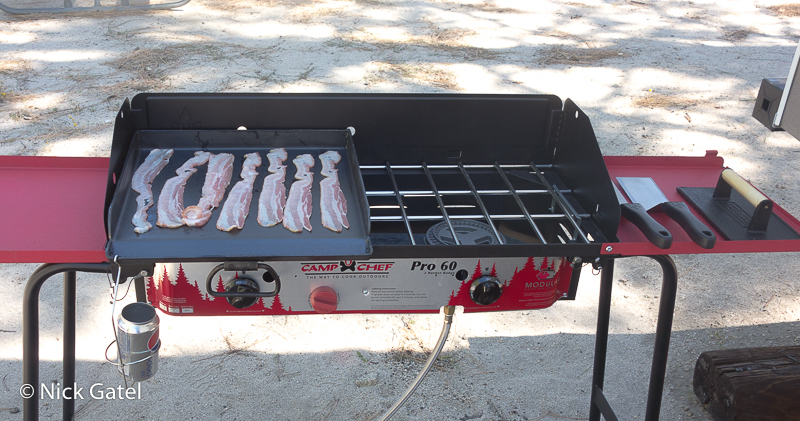
The Pro 60D is absolutely awesome if you buy the Camp Chef griddles, which are made from heavy-duty seasoned steel. The bottom of these griddles have a diffuser plate welded to the bottom.
Below is a double burner griddle with two diffuser plates.
The Camp Chef griddles have to be seasoned just like cast iron cookware.
The griddles have a grease collection tray at the front with a drain hold to capture grease. The griddle comes with a wire metal hanger that can hold a repurposed can to catch the grease.
Or you can purchase a more robust a grease tray that drains into can or you can buy a Camp Chef “Professional Grease Cup” that attaches to the front of the stove and works much better.
As you can see the Camp Chef Pro 60D is too large and heavy for our use. Plus it doesn’t simmer well. It was a piece of camping equipment purchase decision I didn’t think out well. However, if we are expecting to cook for a large group of people on a camping trip, at a picnic, or at home, it’s great.
After several years of use with our camper I finally decided to look for a compact camping stove that better fulfilled our needs. I’ll write about that in another post.
This website may be compensated for linking to other sites or for sales of products. As an Amazon Associate I earn a small fee from qualifying purchases at no additional cost to the purchaser.

